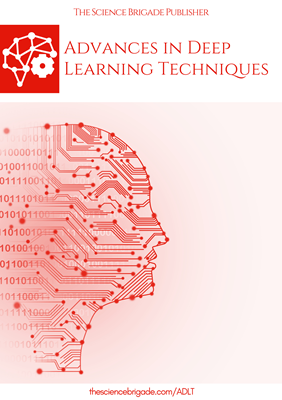Harnessing Quantum Computing for Drug Discovery and Molecular Modelling in Precision Medicine: Exploring Its Applications and Implications for Precision Medicine Advancement
Keywords:
Quantum Computing, Drug Discovery, Molecular Modeling, Precision Medicine, Quantum Algorithms, Quantum Chemistry, Quantum Machine Learning, Quantum Simulation, Quantum Supremacy, Quantum AdvantageAbstract
Quantum computing is poised to revolutionize various scientific fields, including drug discovery and molecular modeling in precision medicine. This paper explores the potential of quantum computing in advancing precision medicine through enhanced drug discovery and molecular modeling techniques. We discuss the principles of quantum computing relevant to these applications and highlight its advantages over classical computing. Additionally, we review current research and developments in utilizing quantum computing for drug discovery and molecular modeling, emphasizing its potential to accelerate the identification of novel drug candidates and improve understanding of molecular interactions. Furthermore, we examine the challenges and limitations of quantum computing in this context and propose future directions for research and application. Overall, this paper provides insights into the transformative impact of quantum computing on precision medicine and its potential to drive significant advancements in healthcare.
Downloads
References
Pargaonkar, Shravan. "A Review of Software Quality Models: A Comprehensive Analysis." Journal of Science & Technology 1.1 (2020): 40-53.
Bennink RS, Bentley SJ, Boyd RW. "Two-Photon" Coincidence Imaging with a Classical Source. Phys Rev Lett. 2002 Jul 1;89(1):1-4. doi: 10.1103/PhysRevLett.89.113601.
Pargaonkar, Shravan. "Bridging the Gap: Methodological Insights from Cognitive Science for Enhanced Requirement Gathering." Journal of Science & Technology 1.1 (2020): 61-66.
Gisin N, Ribordy G, Tittel W, Zbinden H. Quantum Cryptography. Rev Mod Phys. 2002 Jan 1;74(1):145-195. doi: 10.1103/RevModPhys.74.145.
Pargaonkar, Shravan. "Future Directions and Concluding Remarks Navigating the Horizon of Software Quality Engineering." Journal of Science & Technology 1.1 (2020): 67-81.
Lo H, Chau H. Is quantum bit commitment really possible? Phys Rev Lett. 1997 Aug 18;78(17):3410-3413. doi: 10.1103/PhysRevLett.78.3410.
Pargaonkar, Shravan. "Quality and Metrics in Software Quality Engineering." Journal of Science & Technology 2.1 (2021): 62-69.
Lütkenhaus N. Security against individual attacks for realistic quantum key distribution. Phys Rev A. 2000 Oct;61(5):1-6. doi: 10.1103/PhysRevA.61.052304.
Pargaonkar, Shravan. "The Crucial Role of Inspection in Software Quality Assurance." Journal of Science & Technology 2.1 (2021): 70-77.
Peev M, Pacher C, Alléaume R, Barreiro C, Bouda J, Boxleitner W, Debuisschert T, Diamanti E, Dianati M, Dynes J, Fasel S. The SECOQC quantum key distribution network in Vienna. New J Phys. 2009 Jan 15;11(7):075001. doi: 10.1088/1367-2630/11/7/075001.
Pargaonkar, Shravan. "Unveiling the Future: Cybernetic Dynamics in Quality Assurance and Testing for Software Development." Journal of Science & Technology 2.1 (2021): 78-84.
Stucki D, Gisin N, Guinnard O, Ribordy G, Zbinden H. Quantum key distribution over 67 km with a plug&play system. New J Phys. 2002 Jan 21;4(1):41. doi: 10.1088/1367-2630/4/1/341.
Pargaonkar, Shravan. "Unveiling the Challenges, A Comprehensive Review of Common Hurdles in Maintaining Software Quality." Journal of Science & Technology 2.1 (2021): 85-94.
Tapster P. Quantum Cryptography – A Practical Approach. In: Annual Review of Progress in Applied Computational Electromagnetics. Springer. 2014 Nov 7 (pp. 359-385).
Pargaonkar, S. (2020). A Review of Software Quality Models: A Comprehensive Analysis. Journal of Science & Technology, 1(1), 40-53.
Thearle-Adams T. Quantum Cryptography: Secure Communications in the Information Age. Springer. 2006 Jan 1.
Pargaonkar, S. (2020). Bridging the Gap: Methodological Insights from Cognitive Science for Enhanced Requirement Gathering. Journal of Science & Technology, 1(1), 61-66.
Townsend PD, Rarity JG, Tapster PR. Single-photon interference in 10 km long optical fibre interferometer. Electron Lett. 1994 Jan 6;30(2):187-188. doi: 10.1049/el:19940125.
Pargaonkar, S. (2020). Future Directions and Concluding Remarks Navigating the Horizon of Software Quality Engineering. Journal of Science & Technology, 1(1), 67-81.
Wang X, Zhang X, Lu J, Fang H, Chen D. Quantum cryptography with multi-entangled photons. Opt Lett. 2021 Feb 1;46(3):424-427. doi: 10.1364/OL.411696.
Pargaonkar, S. (2021). Quality and Metrics in Software Quality Engineering. Journal of Science & Technology, 2(1), 62-69.
Pargaonkar, S. (2021). The Crucial Role of Inspection in Software Quality Assurance. Journal of Science & Technology, 2(1), 70-77.
Pargaonkar, S. (2021). Unveiling the Future: Cybernetic Dynamics in Quality Assurance and Testing for Software Development. Journal of Science & Technology, 2(1), 78-84.
Pargaonkar, S. (2021). Unveiling the Challenges, A Comprehensive Review of Common Hurdles in Maintaining Software Quality. Journal of Science & Technology, 2(1), 85-94.
Downloads
Published
Issue
Section
License

This work is licensed under a Creative Commons Attribution-NonCommercial-ShareAlike 4.0 International License.
License Terms
Ownership and Licensing:
Authors of this research paper submitted to the journal owned and operated by The Science Brigade Group retain the copyright of their work while granting the journal certain rights. Authors maintain ownership of the copyright and have granted the journal a right of first publication. Simultaneously, authors agreed to license their research papers under the Creative Commons Attribution-NonCommercial-ShareAlike 4.0 International (CC BY-NC-SA 4.0) License.
License Permissions:
Under the CC BY-NC-SA 4.0 License, others are permitted to share and adapt the work, as long as proper attribution is given to the authors and acknowledgement is made of the initial publication in the Journal. This license allows for the broad dissemination and utilization of research papers.
Additional Distribution Arrangements:
Authors are free to enter into separate contractual arrangements for the non-exclusive distribution of the journal's published version of the work. This may include posting the work to institutional repositories, publishing it in journals or books, or other forms of dissemination. In such cases, authors are requested to acknowledge the initial publication of the work in this Journal.
Online Posting:
Authors are encouraged to share their work online, including in institutional repositories, disciplinary repositories, or on their personal websites. This permission applies both prior to and during the submission process to the Journal. Online sharing enhances the visibility and accessibility of the research papers.
Responsibility and Liability:
Authors are responsible for ensuring that their research papers do not infringe upon the copyright, privacy, or other rights of any third party. The Science Brigade Publishers disclaim any liability or responsibility for any copyright infringement or violation of third-party rights in the research papers.



